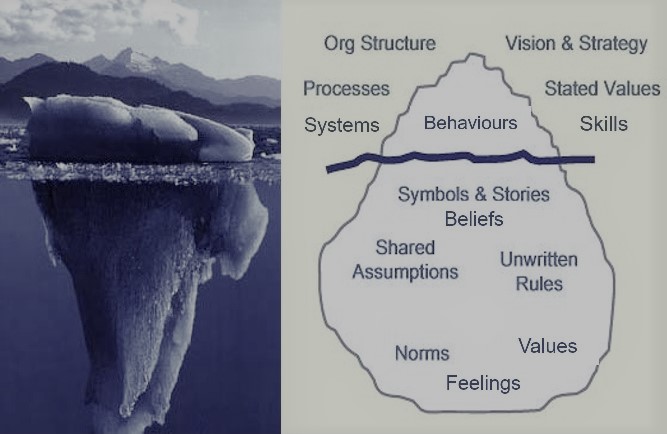The Iceberg Model is a simple way to explain that Organisation Culture is made up of visible and invisible forces that act in ways not dissimilar metaphorically from the wind (above the waterline) and the current (below the waterline). The visible forces (the wind) are those things that are above the waterline and are very apparent – this includes structure, processes, systems, vision, strategy, stated values and behaviours. The invisible forces (the current), are those elements that are below the waterline and less tangible – these include symbols and stories, beliefs, values, mindsets, shared assumptions, unwritten rules and other individual and norms.
If we just focus on the things above the waterline (eg changing behaviour) and ignore for example, the personal values and beliefs that actually drive the behaviour, then we might get some shifts in the culture. However if the desire is to create a transformational culture shift then we need to understand the whole organisational system. The Integral Model divides human systems (workplaces, communities, familiies etc) into four quadrants – two that are invisible (internal) and two that are visible (external). Transformational change requires a whole system approach with diagnosis and designing for the culture transformation addressing all the four quadrants. Read more…


